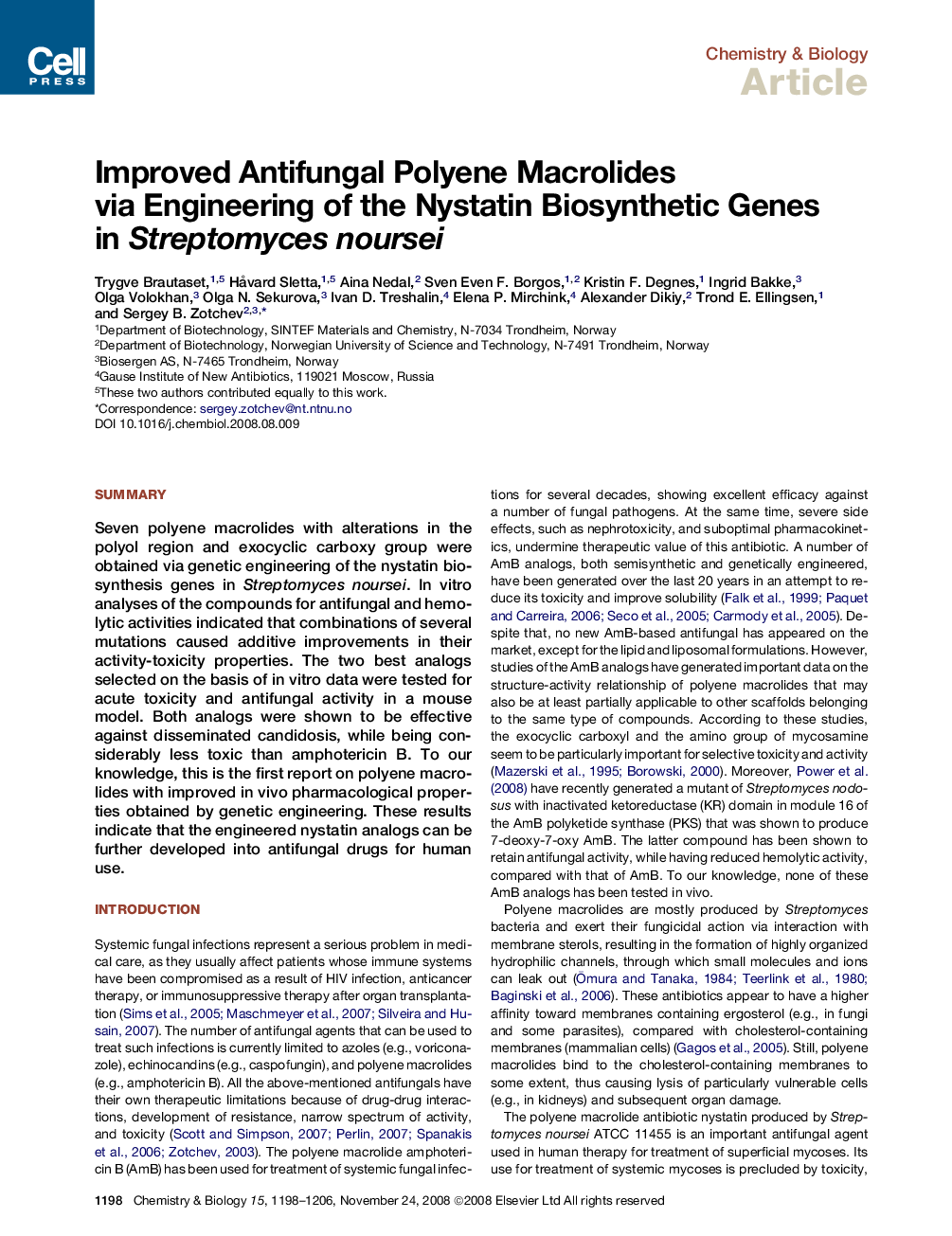| Article ID | Journal | Published Year | Pages | File Type |
|---|---|---|---|---|
| 1391651 | Chemistry & Biology | 2008 | 9 Pages |
SummarySeven polyene macrolides with alterations in the polyol region and exocyclic carboxy group were obtained via genetic engineering of the nystatin biosynthesis genes in Streptomyces noursei. In vitro analyses of the compounds for antifungal and hemolytic activities indicated that combinations of several mutations caused additive improvements in their activity-toxicity properties. The two best analogs selected on the basis of in vitro data were tested for acute toxicity and antifungal activity in a mouse model. Both analogs were shown to be effective against disseminated candidosis, while being considerably less toxic than amphotericin B. To our knowledge, this is the first report on polyene macrolides with improved in vivo pharmacological properties obtained by genetic engineering. These results indicate that the engineered nystatin analogs can be further developed into antifungal drugs for human use.
